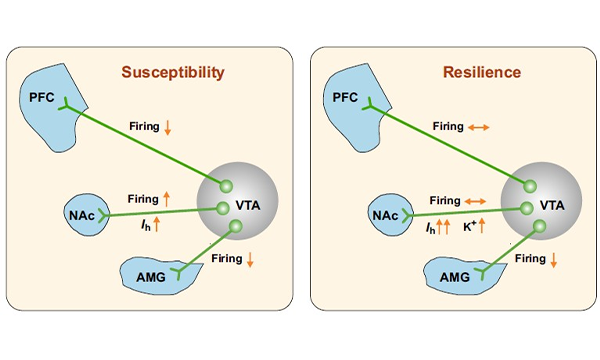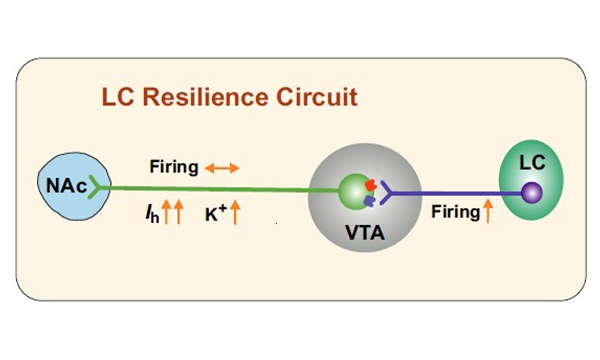The neuroadaptations of midbrain dopaminergic circuitry in response to CSDS

The neuroadaptations of midbrain dopaminergic circuitry in response to CSDS.
(by Ming-Hu Han)

Working hypothesis of LC-VTA-NAc resilience neural circuit.
(by Ming-Hu Han)
Dr. Han’s laboratory employs a “systematic research strategy” to study the nature of susceptibility and resilience from behavioral phenotypes to molecular mechanisms and back to the behavioral level, such that the laboratory would be able to identify the molecular, cellular and circuit adaptations that are both sufficient and necessary to underlie the behavioral phenotypes. For instance, the laboratory uses a chronic social defeat stress (CSDS) model for depression, (1) obtain stable behavioral phenotypes; (2) focus on VTA dopamine neurons; (3) find firing adaptations in these dopamine neurons; (4) explore ionic/receptor mechanisms of the firing adaptations; (5) imitate firing adaptations in VTA dopamine neurons by molecular manipulations using viral-mediated gene transfer and optogenetic tools; and (6) further analyze key behavioral endpoints with these molecular manipulations in vivo. This “systematic research strategy” is the key that helps the laboratory to find right drug targets, in the brain, for depression treatment.